My interest in street art started partially because of my work in the arts, but bloomed on my travels in places like Penang, Lisbon and London, where I found hunting for street art an invigorating way to explore and see a different side of a city. I also realised that there was actually a whole world of Singapore street art right on my doorstep and spent many days trawling the streets and walls of Singapore. I’ve put together several Singapore street art guides from my walks, but I thought it would be interesting to write about how the Singapore street art scene has evolved, especially because Singapore has such a strict image when it comes to graffiti.
That’s how I ended up writing this article which I’m pretty proud of – my first ever print-published article in my writing life. People say print is dying, but there’s still something special about seeing your words printed on paper in a tangible form that is so satisfying for a writer to behold. The article used to be published on the A List website (a-list.sg/street-spray-love/) but it has since been removed when they underwent a revamp.
So please enjoy this article I wrote – I added in pictures and other things that didn’t make it to the print edition (perks of being my own editor and having unlimited webspace). Click here to see all my street art guides from around the world or just my Singapore guides if you are keen to start exploring, or check out my portfolio if you’re curious about my writing.
This article was written for and published by A List and reproduced here with permission and with additions.
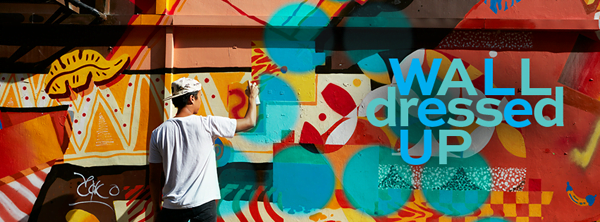
STREET SPRAY LOVE
Tracing the Evolution of Singapore’s Growing Street Art Scene
Skip the air-conditioned galleries and take a walk behind the Aliwal Arts Centre in Kampong Glam. You may be lucky enough to encounter some of Singapore’s artists at work as they create colourful pieces on the large blank wall in the back alleyway. Covering a wall with aerosol paints may have once landed these artists in trouble with the authorities, but these days, their art is more likely to receive 1,000 ‘Likes’ on Facebook instead of a S$1,000 fine.
How does an art form that relies on public property as a canvas continue to exist and flourish in a city with an international reputation for cleanliness and order?
Crew are you
Street art in Singapore has gained recognition in recent years, but it is not a recent phenomenon. While there is little official documentation and archival of this ephemeral art form, some of the artists involved in Singapore’s early street art scene estimate that the community started to grow in the 1990s, with the formation of street artist collectives known as crews.
“Singapore was one of the first street art scenes to start in Southeast Asia, and had some influence on early scenes in neighbouring countries like Malaysia, the Philippines and Indonesia,” says Zul Othman, founder of Singapore street art crew RSCLS. Zul, who also goes by the moniker ZERO, is the first street artist in Singapore to be awarded the National Arts Council (NAC)’s Young Artist Award in 2013 for artistic excellence and his role in paving the way for the Singapore street art scene.

Another prominent street art crew with a long history in Singapore is the ZincNiteCrew (ZNC). Founded in 1998 with just four members, it has over 80 members spread across the globe today. “‘Street art’ wasn’t even a term back then, it was just called graffiti,” says one of ZNC’s founders who goes by the name SlacSatu (Slac). “There were no legal spots then, just a lot of bombing of tags and throw-ups.”
‘Tags’, the artist’s unique signature, and ‘throw-ups’, simple stylised letters usually in one or two colours, are a starting point for any street artist. They were developed as a quick way to leave their mark while evading authorities closing in on them. The widespread proliferation or ‘bombing’ of these tags and throw-ups on public property are generally considered an unwelcome destruction of public property, and a crackdown by the authorities left Singapore’s street artists with a diminishing amount of space to paint without censure, a factor that contributed to a stagnation of the scene in the 2000s.
In recent years, tourism has been an important factor in encouraging street art around the world — Melbourne’s Hosier Lane and London’s Shoreditch district are just some examples where street art has transformed once-derelict neighbourhoods into tourist hot spots. Closer to home, visitors flock to Penang’s George Town precinct to take pictures with the various artworks in its alleyways, a trend kicked off by Lithuanian artist Ernest Zacharevic’s art for the George Town Festival back in 2010.
Endorsement by the authorities has helped shift the perception of street art away from petty vandalism to recognising it as an art form in its own right. “Street art gives our city an exciting edge and energy, and the NAC believes that it plays an important role in shaping Singapore’s cultural identity,” says Aruna Johnson, deputy director of Youth Arts, NAC. “In recent years, we have seen an increased acceptance of and growing interest in this art form, especially among youth in Singapore, and we want to encourage its development.”
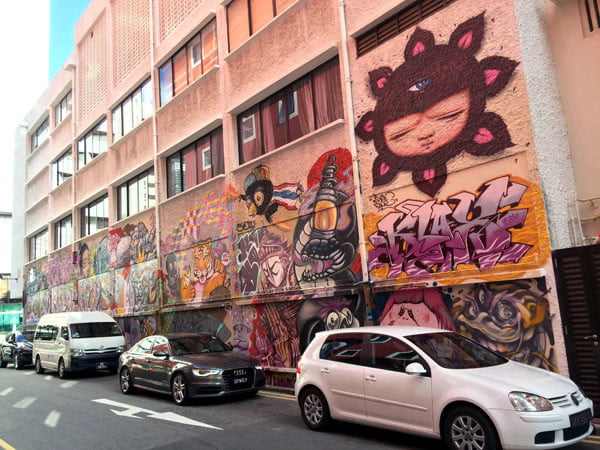
Some of NAC’s efforts since it started to support the art form in 2013 include awarding seed grant status to street art crew RSCLS, and including street art into the programming for some of its youth arts events and arts education efforts.
Ask First
But don’t take your paints to the nearest wall just yet. Getting caught creating unsanctioned art in Singapore comes with serious consequences under the Vandalism Act: jail terms of up to three years, fines of up to S$2,000, or even caning up to eight strokes. These severe terms have worked as a deterrent to most, but it has not stopped some from trying their luck.
In 2015, two German nationals were sentenced to nine months in jail and three strokes of the cane for painting on an MRT train without permission. More famously, recall the high-profile ‘sticker lady’ case of Samantha Lo (also known as SKLO) in 2012, where she was charged with mischief and sentenced to community service for her cheeky stickers pasted on traffic-light buttons. It sparked much debate about vandalism and street art locally and internationally.

Most of the street art you see on Singapore’s walls today has been sanctioned in some form, usually through permission granted by relevant government bodies for public property. The 50 Walls project in 2015 — which saw Australian and Singaporean street artists take to walls in Housing & Development Board estates and shopping malls — was spearheaded by the Australian High Commission as a part of the SG50 celebrations. Before it was closed for redevelopment, the Commonwealth viaduct along the Rail Corridor was a place where the Urban Redevelopment Authority (URA) and NAC had let street artists paint freely on its walls.
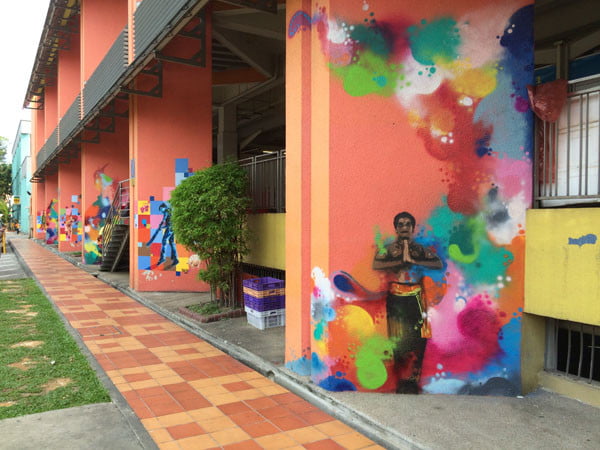
Then there is the commission of artworks by private property owners — the whimsical sight of a policeman hauling a car by pulley along an alleyway is an older work by Singaporean artist TraseOne for Naumi Hotel, a boutique hotel along Beach Road. If you have visited the new Timbre+ Gastropark at Ayer Rajah Crescent, those colourful containers and Airstream walls are works by various members of RSCLS, who were commissioned by the Timbre Group.
Balancing Act
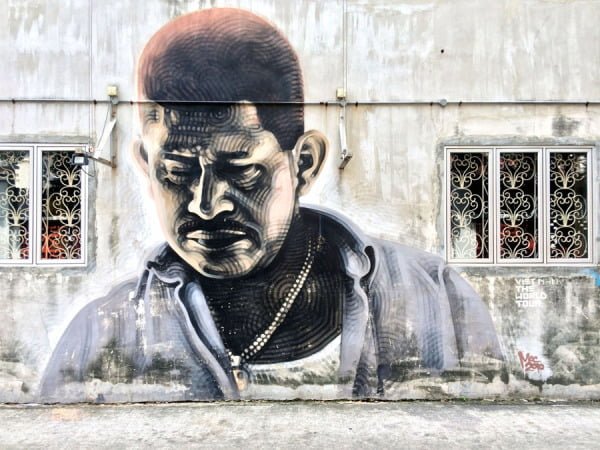
One could argue that having to ask permission goes against the basic tenet of street art, which is unsanctioned by nature. The roots of street art have always been a way to give voice to the unrepresented; an accessible way for anyone to express what they have to say without curation and censorship of a formal platform. Is street art still considered street art if you have to ask before you paint?
The artists themselves are pragmatic about the situation. “We have to follow the rules. It is Singapore, after all,” says Slac, “but as long as there is a street art scene in Singapore, we can still be recognised worldwide.” Meanwhile ZERO feels that limitations can be seen more as an opportunity. “It makes us more creative. It forces us to strategise our works differently, instead of being confrontational, we learn how to subvert certain issues through subtleties.”
“It is a lot easier to paint walls outside Singapore, there is more creativity and freedom to flourish,” says Sheryo, a Singaporean street artist who is now based in Brooklyn, New York, and has had her work featured internationally in cities including London, Miami and Melbourne. “Boundaries are not being pushed. What we need are more opportunities for artists here, and for artists themselves to want to push the boundaries and art scene.”
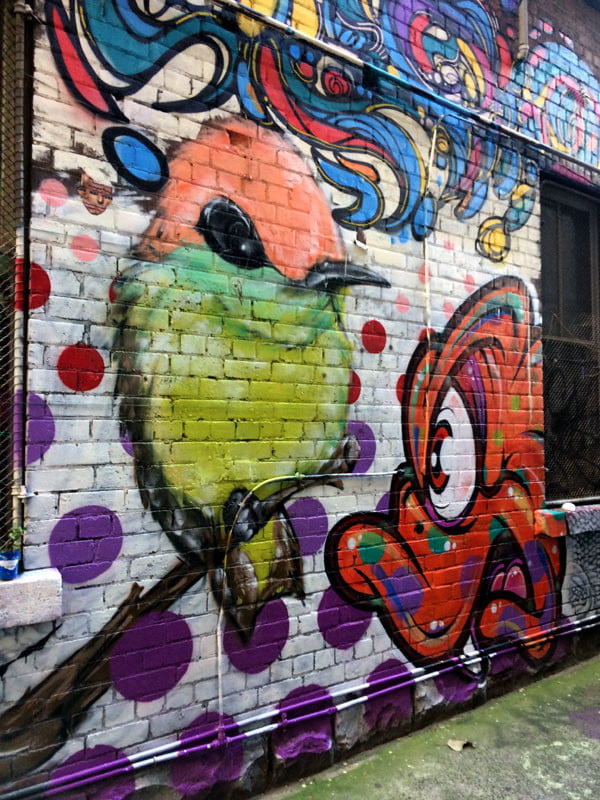
“NAC is excited to have more conversations with street artists to explore how we can sustain support for their practice and develop a sustainable ecosystem for street art,” says Johnson. Following the success of the Rail Corridor, NAC continues to work with partners like URA, *SCAPE and the Arts House Limited to open up more wall spaces for street artists to practice, wherein the art is left to the discretion of the artist as long as they do not infringe the rules that typically govern public art display in Singapore.
Street art has always been the voice of the people, a reflection of their thoughts and surroundings, and in many societies, often used as a tool for rebellion. But in Singapore, the cooperation among artists, property owners and state seems to be the best compromise so far between artistic freedom of expression and Singapore’s strict laws. In a country that looks to promote art appreciation among its people, what better way to do so than by having art all around you, interacting with you from unexpected corners as you go about your daily life?
Street Cred
Introducing some of Singapore’s more prolific street artists.
Sheryo

Named one of the top women street artists to watch on CBS New York and the Huffington Post, Sheryo is currently based in New York and works in collaboration with her American partner, The Yok. The pair visited Singapore in 2015 for the 50 Walls project and left their colourful creations in several locations around the island, including Bras Basah Complex, Telok Blangah Rise Food Centre and Haji Lane.
Slacsatu
Co-founder of ZincNiteCrew (ZNC), his art usually showcases fine detail, impressive given that his main tool is the aerosol spray. He is also co-owner of The Black Book, a specialised graffiti store at 71 Sultan Gate. Visit the store to see the ever-changing works of art on the 14 metre-long board just outside the door.
ZERO
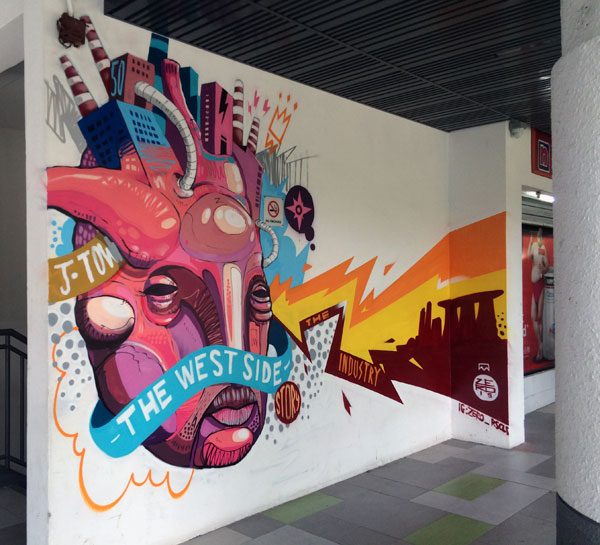
Founder of RSCLS, he often paints these mask-life faces that have become his distinctive signature. RSCLS has a studio at Aliwal Arts Centre and members can often be found working on the walls behind the building. The crew spearheaded a project called Solidarity, which saw them collaborating with other crews around the region. See the results at 222 Queen Street (with Thailand) and The Substation (with Indonesia).
Clogtwo
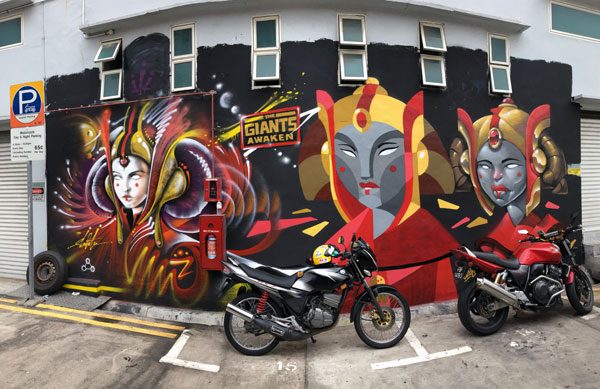
He recently represented Singapore at HKwalls 2016, a Hong Kong street art festival which saw an international line-up of artists take to the walls of Sham Shui Po. Clog often works with his partner, graphic artist Inkten. Together, they form The Ink&Clog Studio, and you will often see their collaborative works side by side.
Traseone
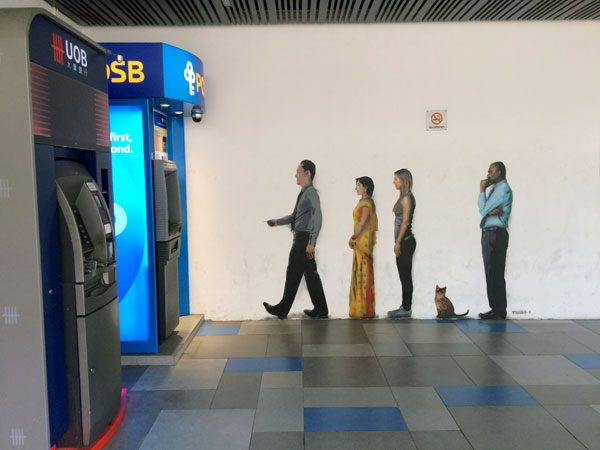
Also known as Ts1, his most popular works are the life-like stencils of people reacting to their surroundings. Look out for his skateboarding figures at Woodlands Mart, Taman Jurong Shopping Centre and Lepark at People’s Park Complex. His works have covered some illustrious walls, including the front façade of the Australian High Commission and Facebook Singapore’s new office at South Beach Tower.
Ceno2
Calls himself a ‘Graffiti Fine Artist’, his tinted portraits are detailed, very distinctive and extremely popular. He receives many private commissions which he showcases on his Instagram feed that has over 100,000 fans to date. Check out his latest work for The Singapura Club at 26 Haji Lane.
There you have it, my first ever printed piece. Writing this piece took some hair-tearing and a lot of talking out – props to my lovely friend J who was a great resource and sounding board, and the A List folk for giving me the opportunity to write this piece.
I will qualify to say that street art is a more complex topic than one might imagine. The definition of street art in itself is pretty nebulous, so just trying to figure out an angle was tougher than I thought. It’s also made me think quite hard about the impact of street art beyond my personal interest in uncovering it, and how it impacts cities and people and policies.
Love discovering street art? Head this way for all my street art guides for Singapore and around the world.

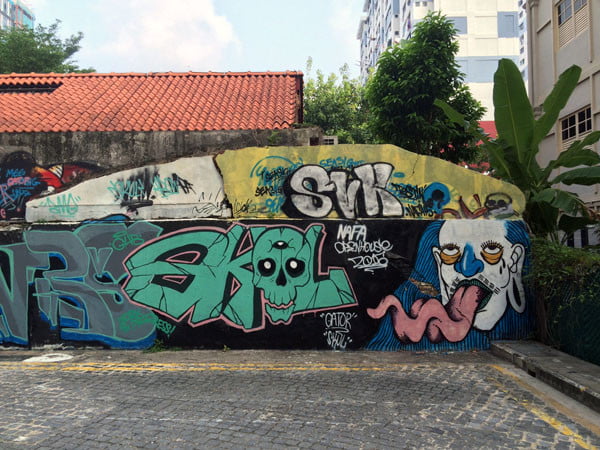
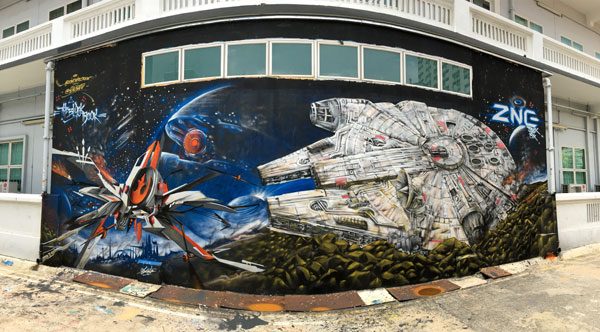
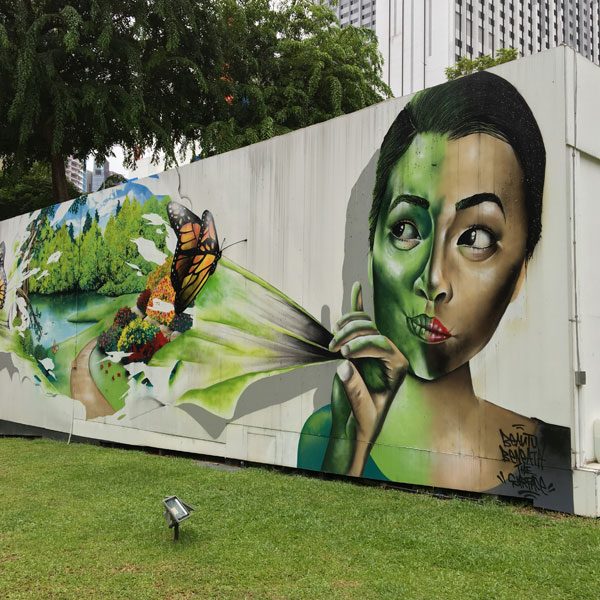



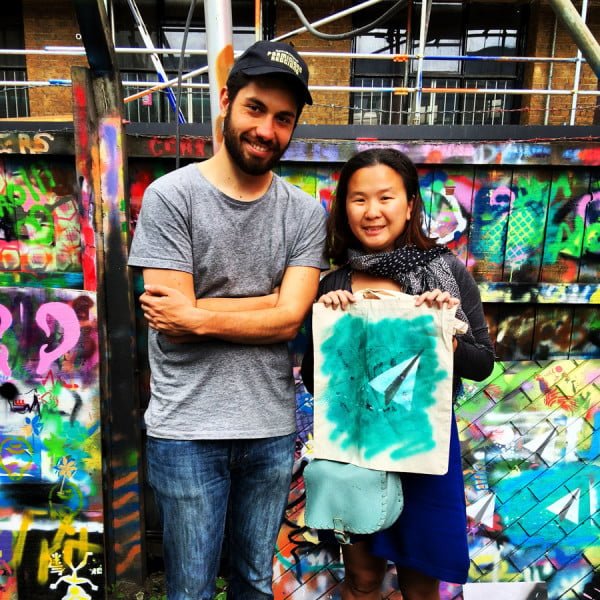


XIAO WENJING
Monday 7th of September 2020
Hi, I am a Chinese girl studying in Singapore, and I also like graffiti art! I read this article by accident and was pleasantly surprised and benefited a lot from it. In particular, your opinion on how wall painting graffiti continues to exist and flourish in a city Singapore with an international reputation for public health and order, I think your answer is very enlightening. Indeed, Singapore's street art was recognized many years ago, and the government has also provided legal public space for graffiti creators to use. The main reason for this is that the Singaporean government recognizes that street art can bring vitality to the community and play an active role in shaping Singapore's culture. We can see, in many Singapore neighborhoods, such as the famous Chinatown, Somerset has a lot of exquisite graffiti art to present Singapore culture! Among them, the scenic graffiti spot that impressed me the most was Little India in Singapore. I learned that there were riots in Little India in December 2013. At that time, Singaporeans and tourists were afraid to go to Little India. Later, the Tourism Bureau used artistic means to reshape the public image of Little India, the most obvious of which was the approval of a large number of mural design applications on the exterior walls of buildings in the area. Now, Singapore's Little India has become a popular tourist attraction. This cultural area with regional characteristics is interdependent with art, and it also reflects the ability of graffiti to revitalize the community.
Jaclynn Seah
Monday 7th of September 2020
Well I really like the murals they have in Little India and I could be wrong but I'm not sure that increase in murals had anything to do with the riots – my assumption was that similar to Kampong Glam and Chinatown and even Katong more recently, they were looking to spruce up the areas by making them more photogenic and lively since tourists are quite driven by photos and Instagram these days. Also in 2015 it was the SG50 year and we had a lot of murals everywhere because of the celebrations and funding. Thanks for reading!
Made Anthony Iswara
Tuesday 28th of February 2017
Beatifully written, well-supported arguments, and filled with awesomeness! I'm doing a research myself on the subject and may I say that you gave me interesting insights :)
Jaclynn Seah
Wednesday 1st of March 2017
Thank you Made! I'd love to see your final research paper when you do finish it :) cheers and good luck writing it!
Anupama K. Mazumder
Tuesday 2nd of August 2016
I am going to be visiting Singapore in August.. so look forward to seeing all of these myself!
Sher
Wednesday 27th of July 2016
This is amazing!! My favourite is the atm queue haha :'D Reminds me of Penang Georgetown.
Jaclynn Seah
Wednesday 3rd of August 2016
It is kinda cute and also a subtle and clever dig at Singapore :)
maria
Friday 22nd of July 2016
This is tremendous and beautiful. The art is very beautifully made. I just love it..!